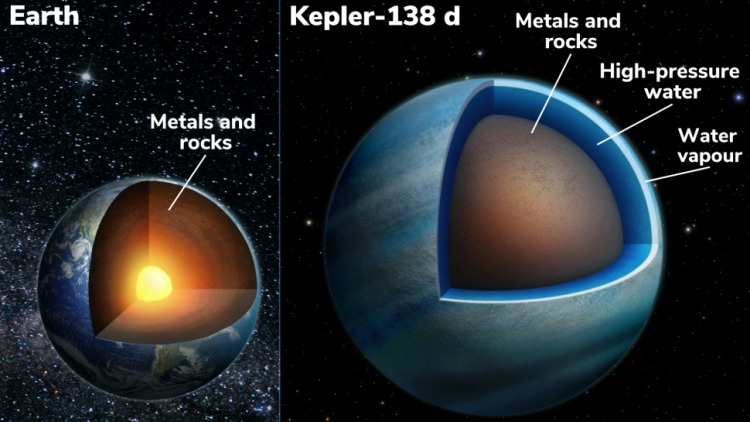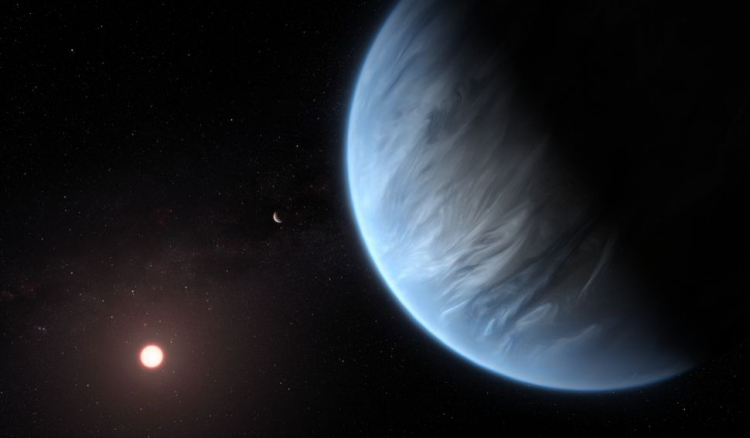According to a new study published by an international team of scientists in the journal Nature astronomy, unusual planets have been discovered close enough to Earth that they can be completely covered with water. Astronomical models allowed for such objects to exist, but for the first time there was real evidence of their existence.
The world of water in the artist’s representation. Image source: NASA
Scientists, intrigued by data obtained by the Kepler space telescope in 2014, drew attention to the exoplanets Kepler-138c and Kepler-138d orbiting a star located 218 light-years from Earth in the constellation Lyra. For further studies, the Hubble telescopes and the now defunct Spitzer telescopes were used, which helped establish the composition of the planets: it is likely that they are largely composed of water.
According to astrophysicists involved in the project, planets larger than Earth were previously thought to be usually piles of metals and rocks – which is why they are also called “super earths“. Now it has been found that the planets Kepler-138c and d differ markedly from the models – they are probably covered with water, which makes up a significant part of their mass. The existence of such worlds has long been predicted, but for the objects that can be safely called “water worlds” are observed for the first time.
However, it is still impossible to be completely sure that the planets are indeed covered with water – there is no way to explore them in more detail. However, their density could be calculated. Although each of them is three times the volume of the Earth, the mass of both planets is only twice, which indicates their low density. Such a density indirectly indicates that a significant part of the planet’s volume is occupied by something heavier than hydrogen or helium, which make up the atmospheres of gas giants, but lighter than the rocks that scientists hoped to detect. It is quite possible that we are talking about water.

Image source: University of Montreal
The researchers do not exclude that structurally the planets resemble some of the icy moons of the solar system, on which liquid water is hidden under the ice. At the same time, exoplanets are much larger and much closer to the local luminary Kepler-138, so conditions on them are at least warmer in temperature.
According to the researchers, the temperature of Kepler-138c and Kepler-138d atmospheres is much higher than the boiling point of water, so the atmospheres are likely to contain a lot of steam. However, under the atmosphere there must be liquid water, or water at such a temperature and pressure that the distinction between the liquid and gaseous phases disappears. We are talking about the so-called. supercritical fluid.
Exotic worlds weren’t the only surprise in the star system studied. In 2014, astronomers discovered only three planets in it, but there is evidence of the existence of another one – Kepler-138e, a small world that makes a complete revolution around the star in 38 days at a distance that, in theory , allows liquid water to exist on the surface. Further research has shown that the closest planet to the star, Kepler-138b, is about the size of Mars and is one of the smallest of more than 5,000 planets discovered so far outside the solar system.
Scientists hope that planets orbiting the red dwarf Kepler-138 aren’t the last such objects discovered. As surveying instruments and techniques improve, more aquatic worlds such as Kepler-138c and d are likely to be identified.
If you notice an error, select it with the mouse and press CTRL + ENTER.


